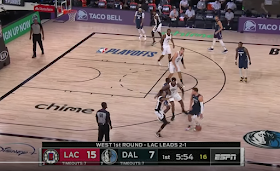Reba McEntire says there's a time and a place for a song. It's the same way for sports as we leverage strengths and adjust to limit opponents.
As we connect with artists (players), we need a message that resonates throughout the team. Some players "tune us out" if dissatisfied with their role.
Coaches are lyricists, using stories to teach. Love your losses by learning from them.
Select a "song" (play). As a youth (developmental) coach, prioritize skill development and "core" actions that work for you.
- Pick-and-roll - PnR (develops offense and defense)
- Drive and kick
- Cutting (give-and-go, back cuts)
- Off-ball screens
- Screen-the-screener
- Screen combos (Iverson, Spain PnR, Corner Rip - serial screens)
GSW/Corner Rip (serial screening)
I won't say we executed them to my satisfaction, but the players going into high school can't say, "I never heard that tune."
Reba says, "If your gut says this is a good song (play), then it's a good song." In practice, the analytics should define "quality shots."
Relatability. A song (action) should play for an audience (team). Lob plays at the rim don't belong in our palate. Plays defined to combat switching only work if the mismatches are viable.
Adapt what we see and what we hear to our domain and beauty emerges. I worked with a coach who told players, "I want to be entertained." Amen.
Lagniappe: "It's not the world that needs to change, it's me that needs to change." - Larry, contestant, History Channel, Alone, Season 2.
Lagniappe 2: An efficient scorer is not a selfish shooter. Volume shooting doesn't make someone a scorer.
Lagniappe 3: NBA Teaching Highlights
Two intriguing actions on this play. First, the split of the PnR and second a sidestep stepback on the Conley three.
We share a lot of friendly debate about shooting mechanics. Five seconds of Jamal Murray's off-the-bounce three - hop step, turn, and dip are all part of his process.
BTL (between-the-legs), BTL, stepback, three.
Jerami Grant is a 34.7 career three-point shooter, but upped that this season to 38.9% and went 4-7 yesterday...fans can see hard work paying off.
...a game of separation. With ever-increasing reliance on defending the three, players need to escape by practicing side-dribble threes.





















